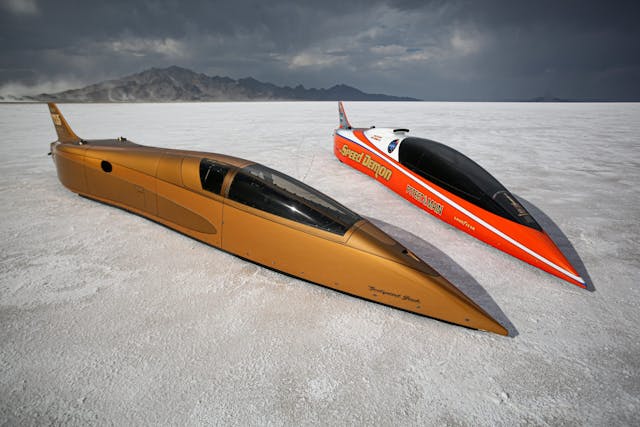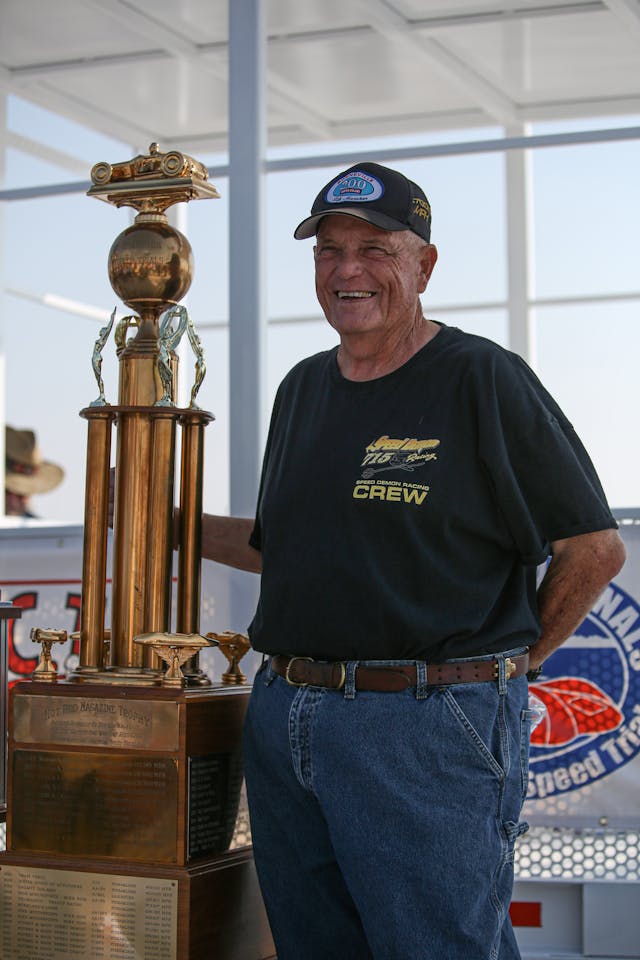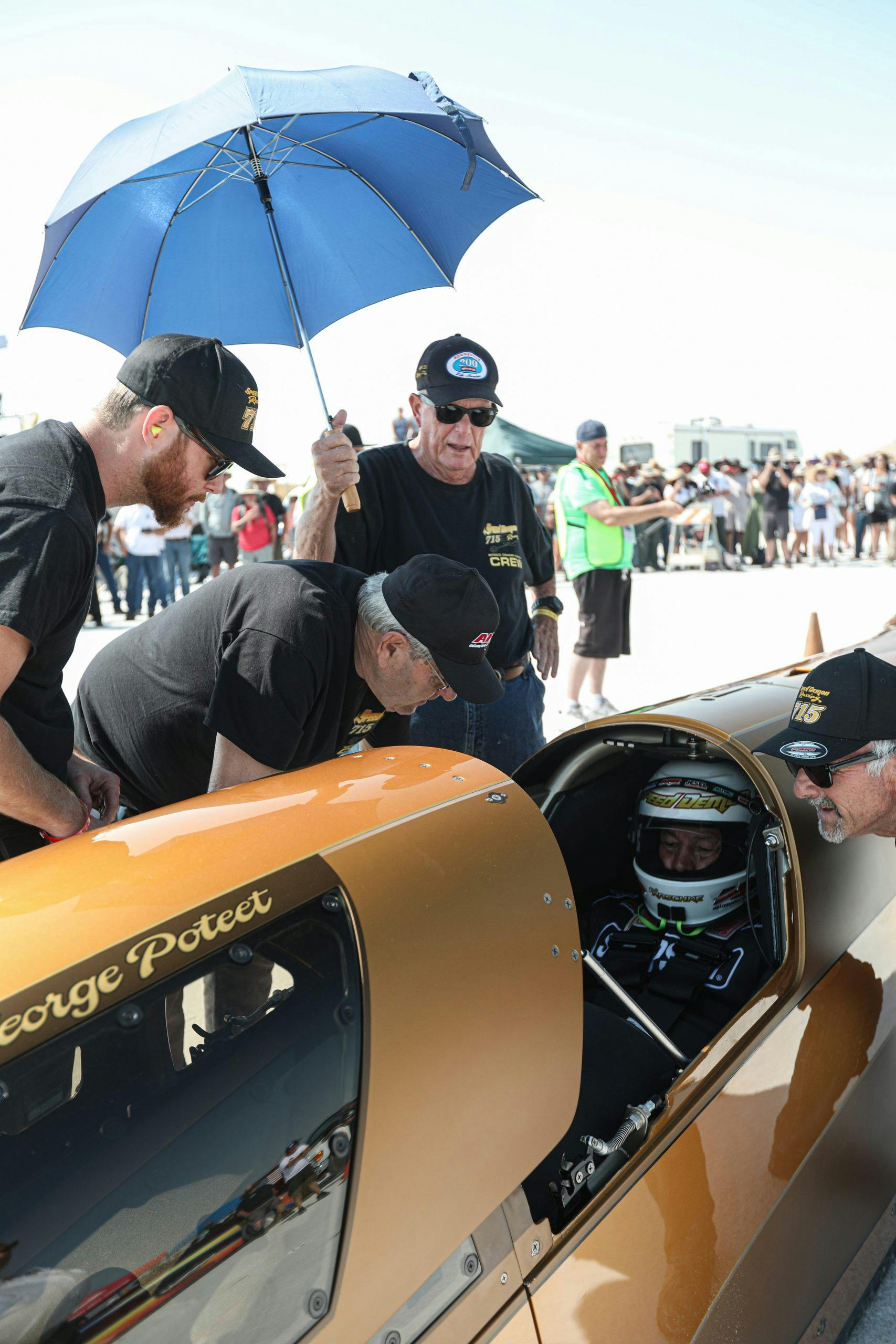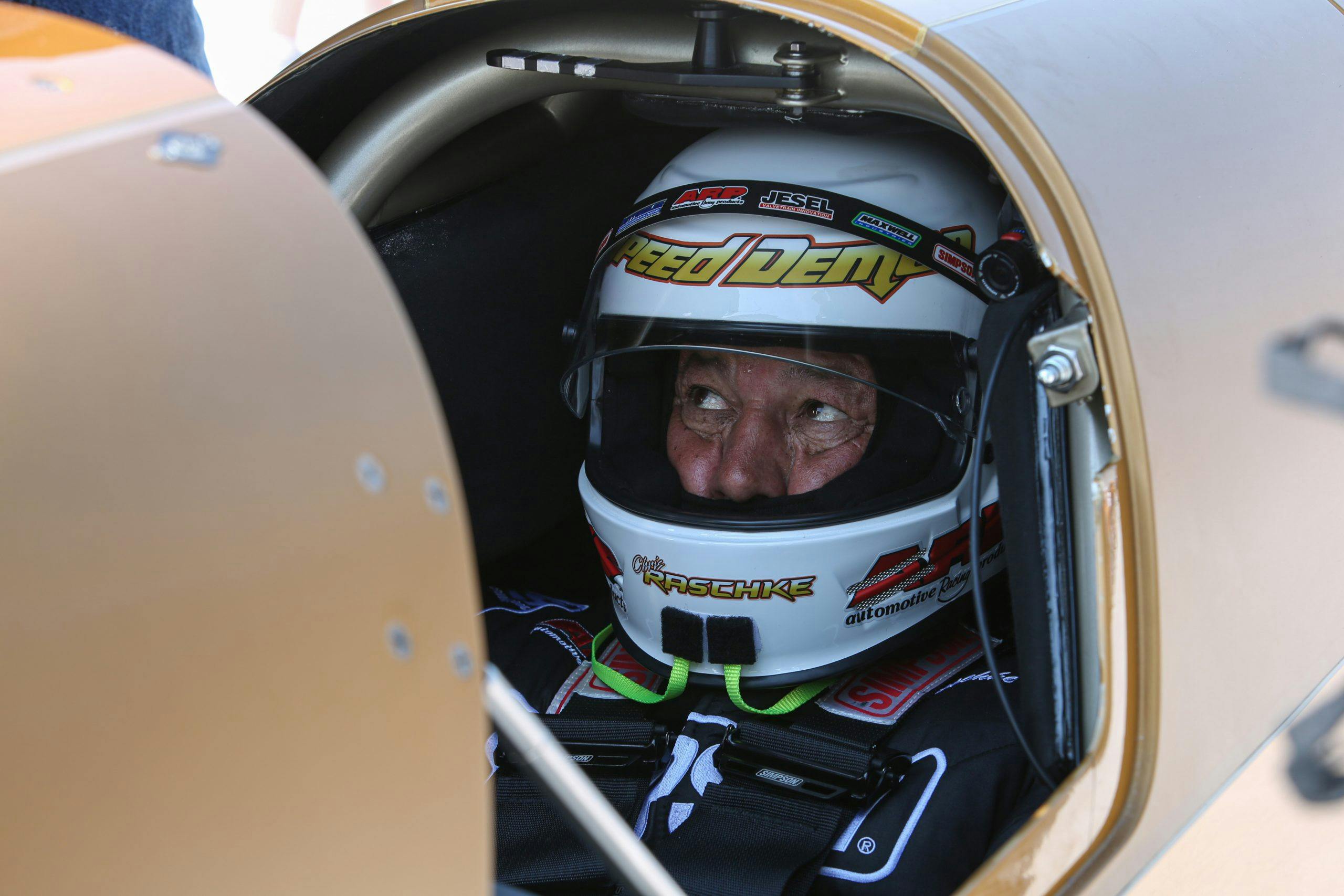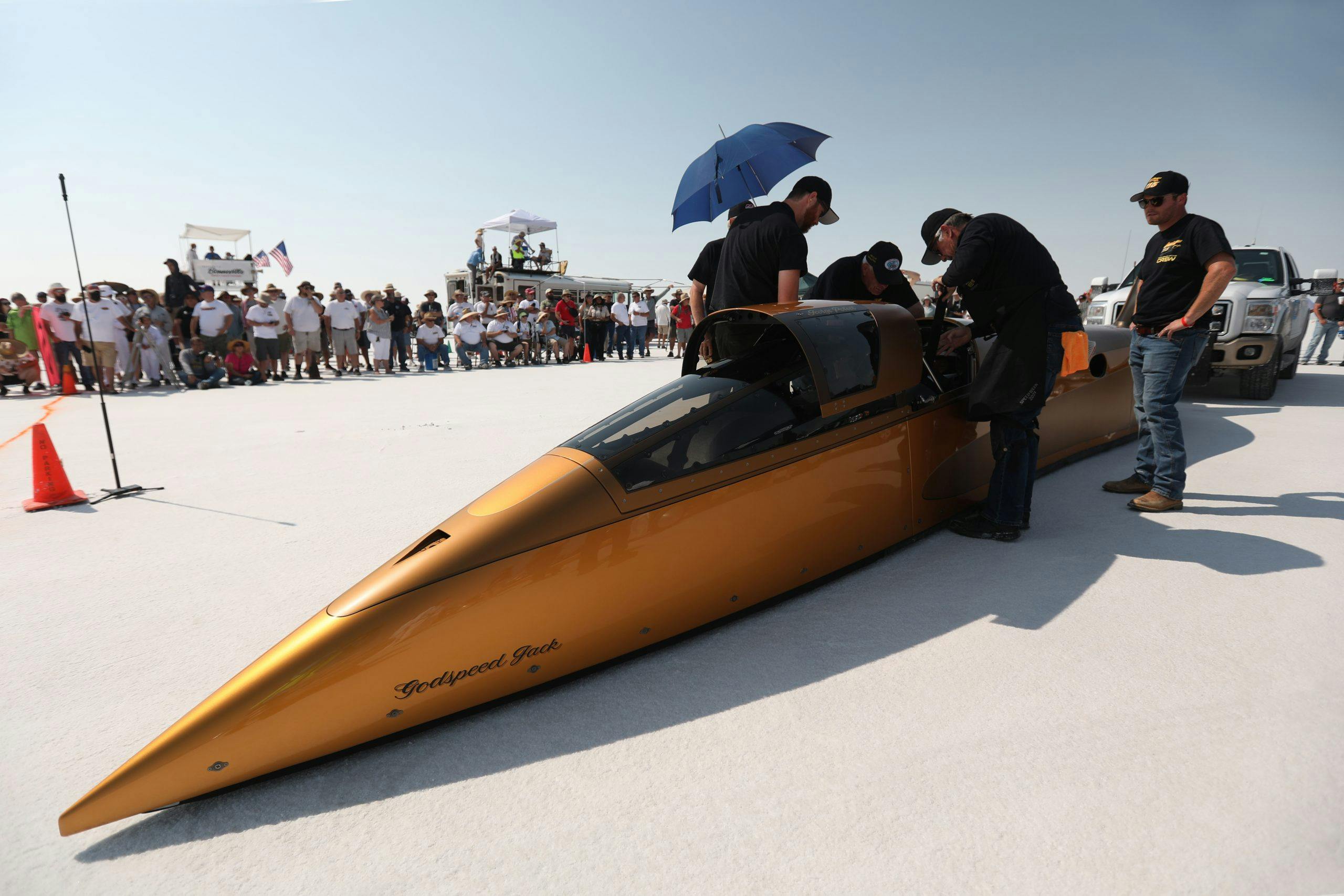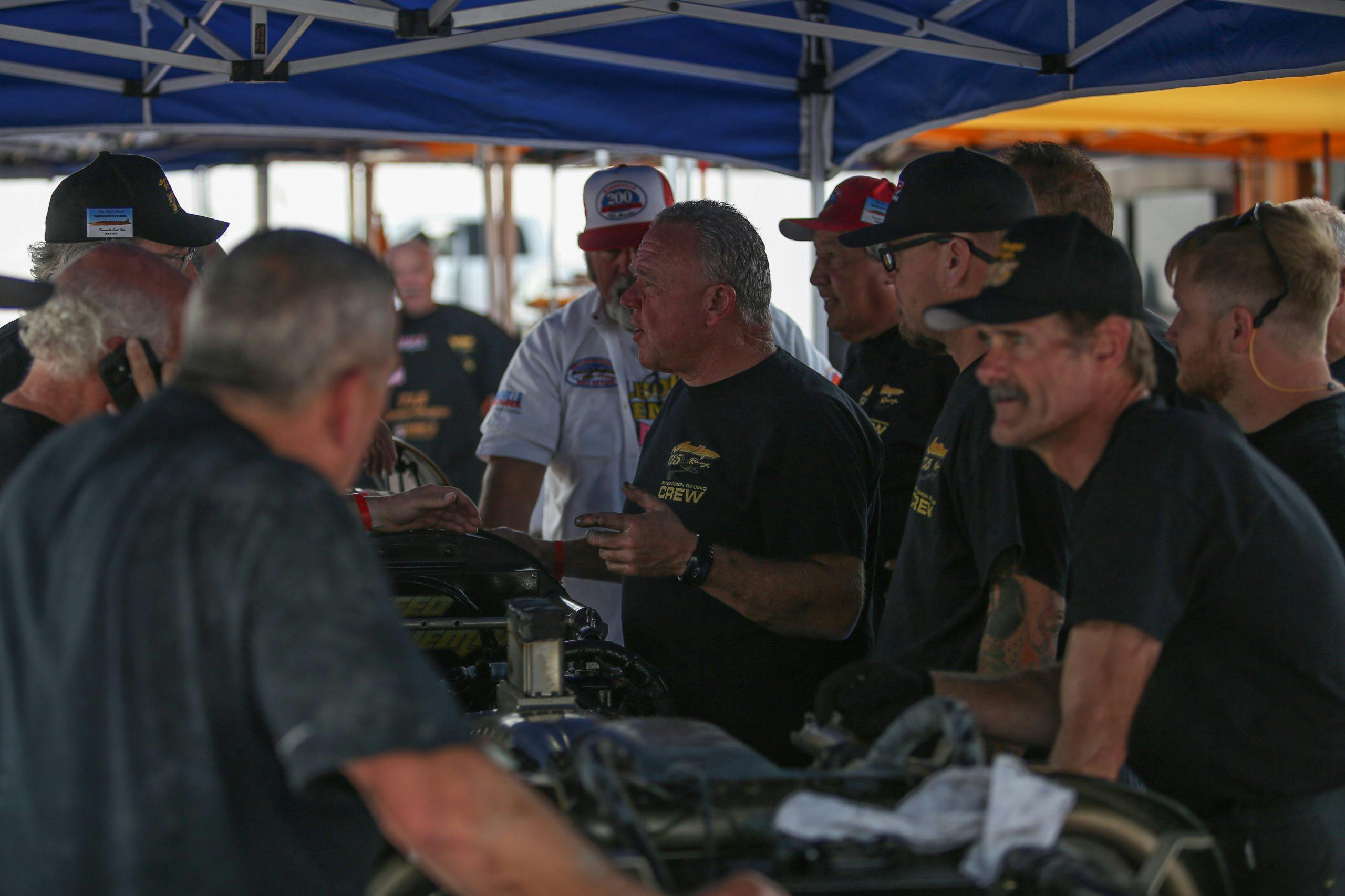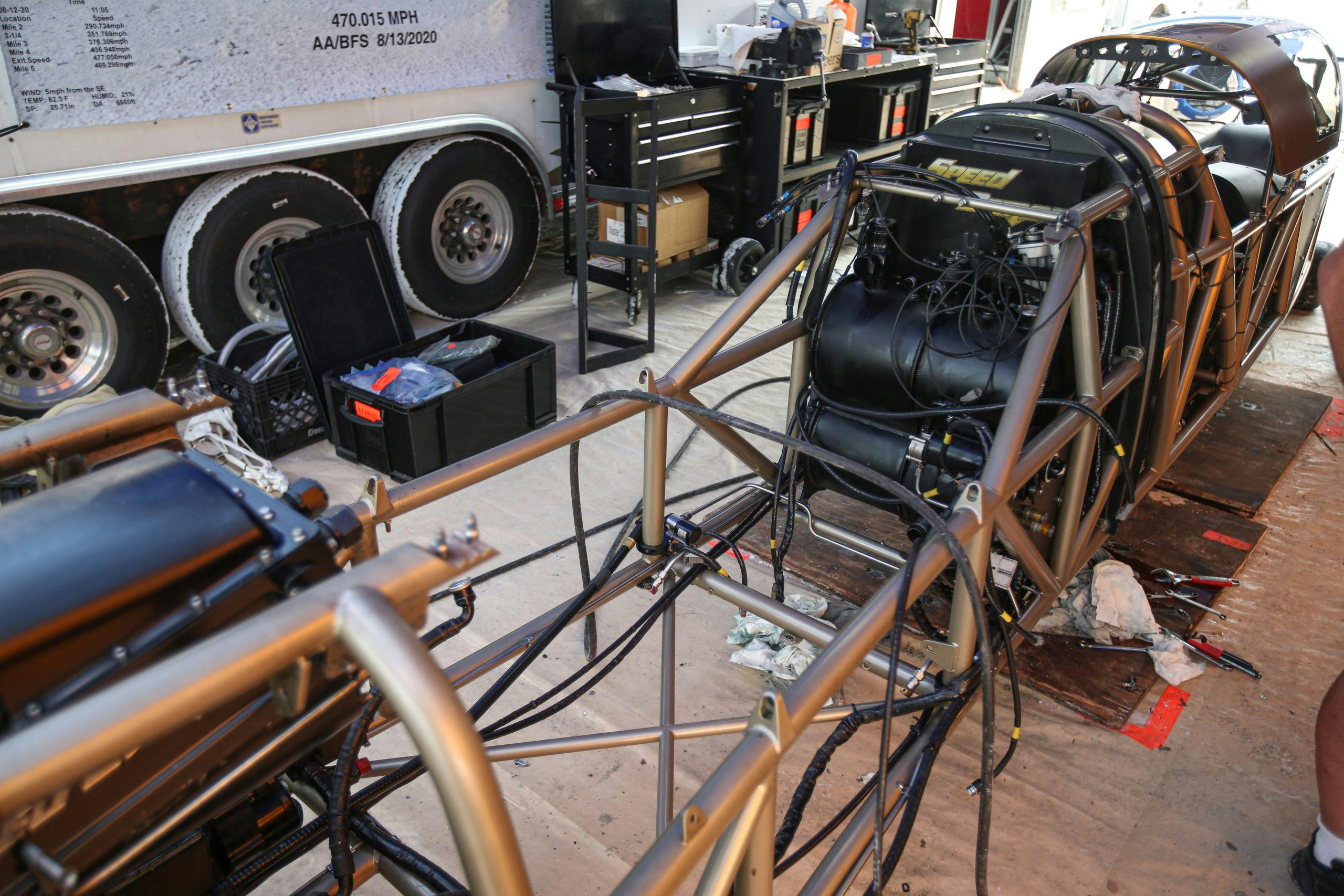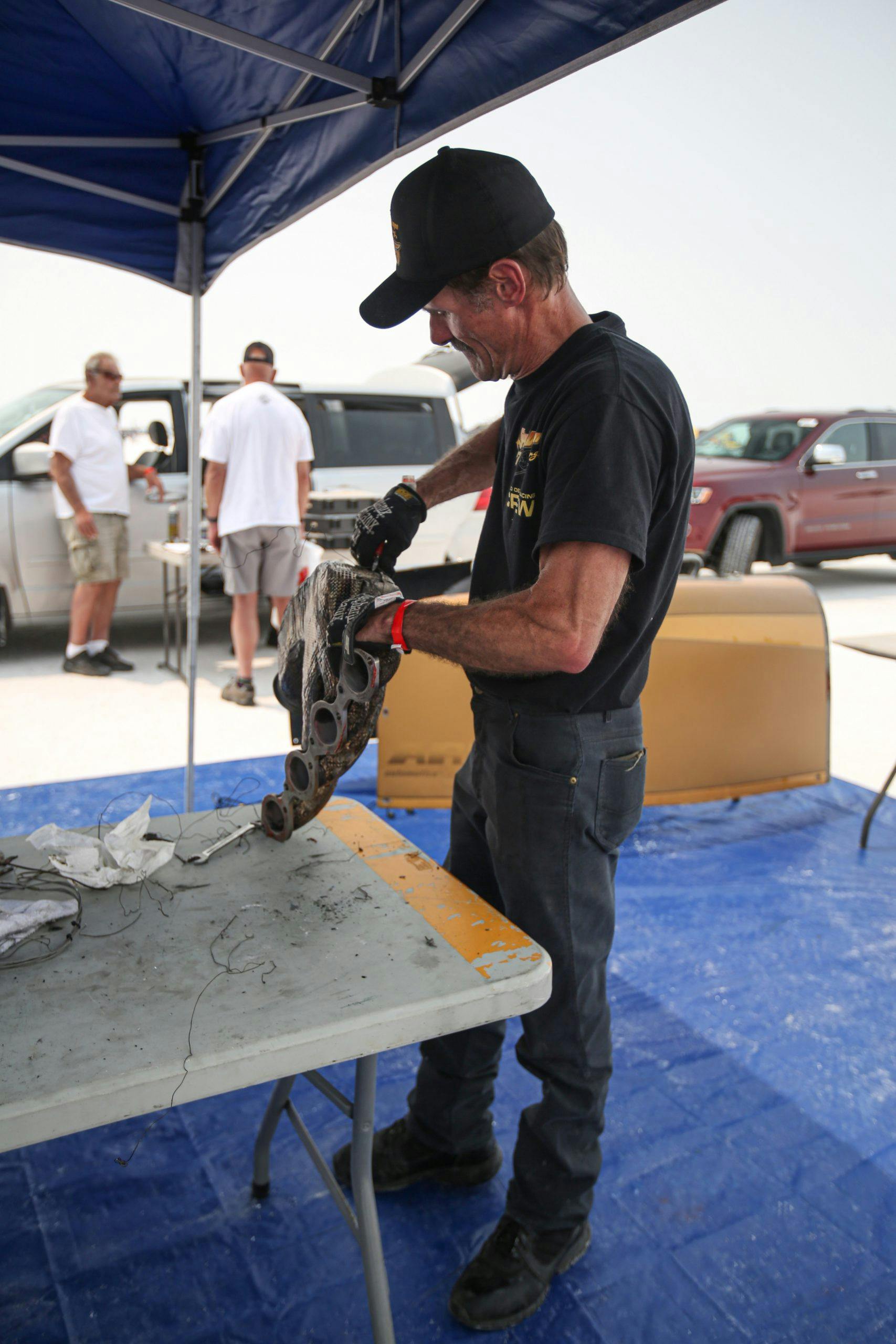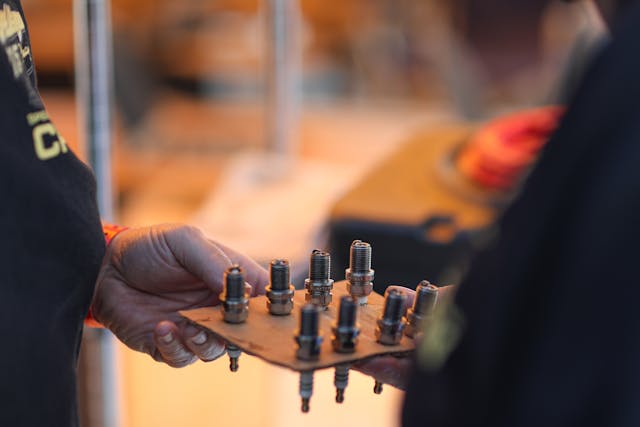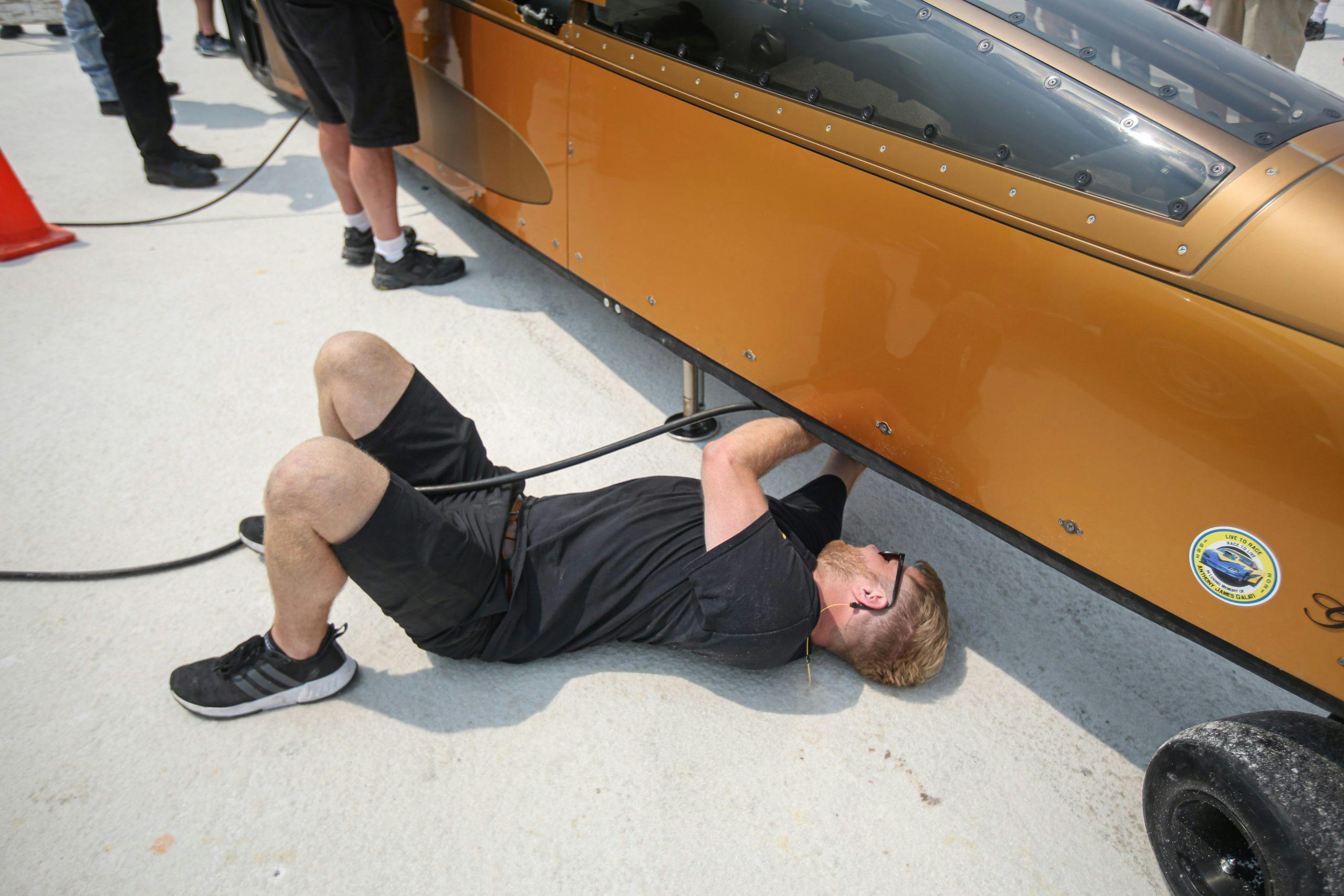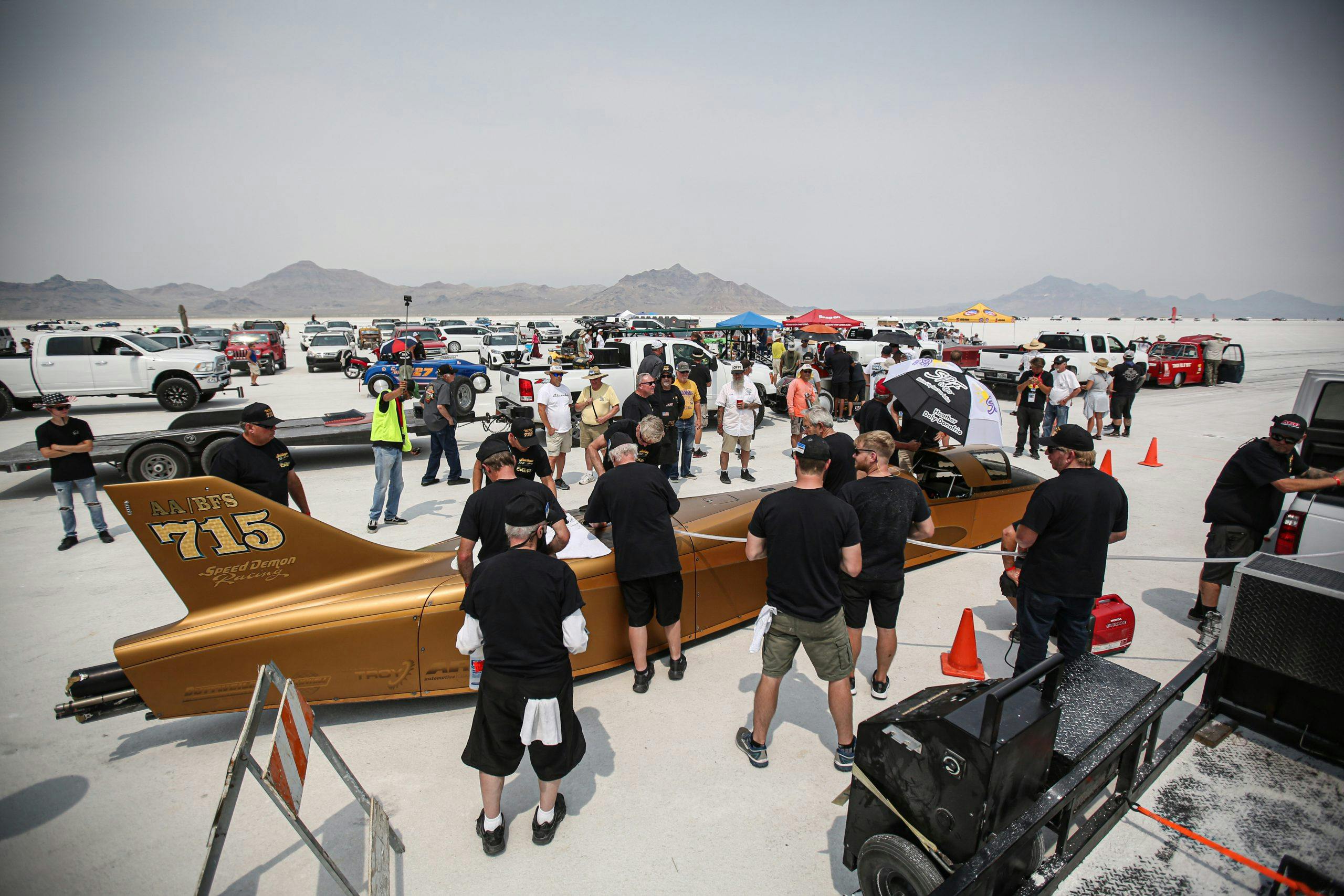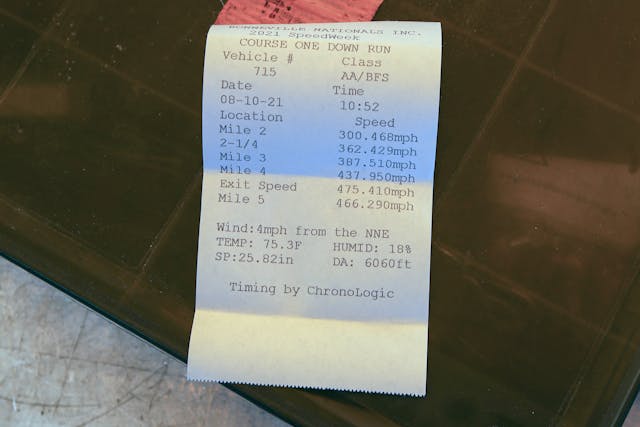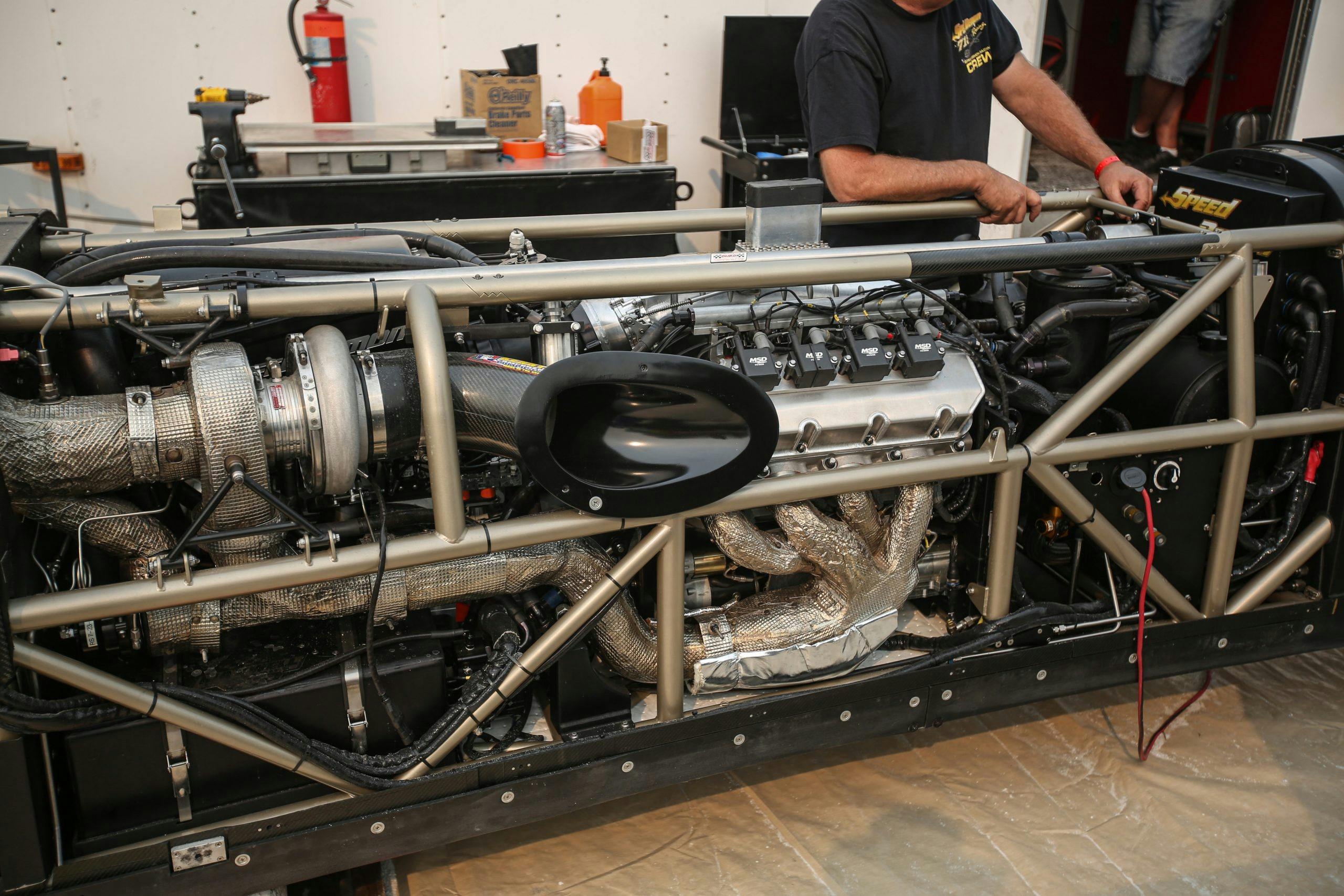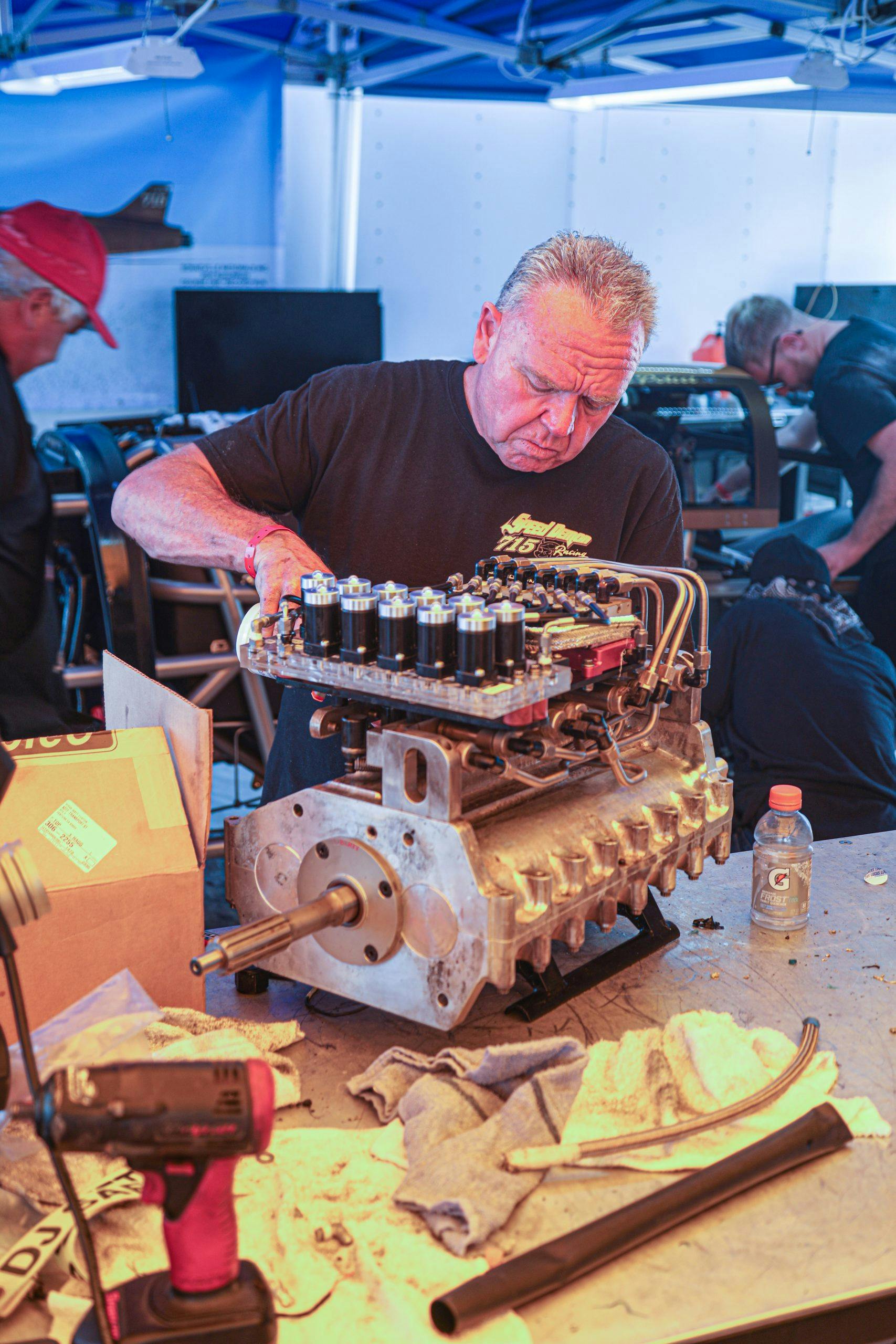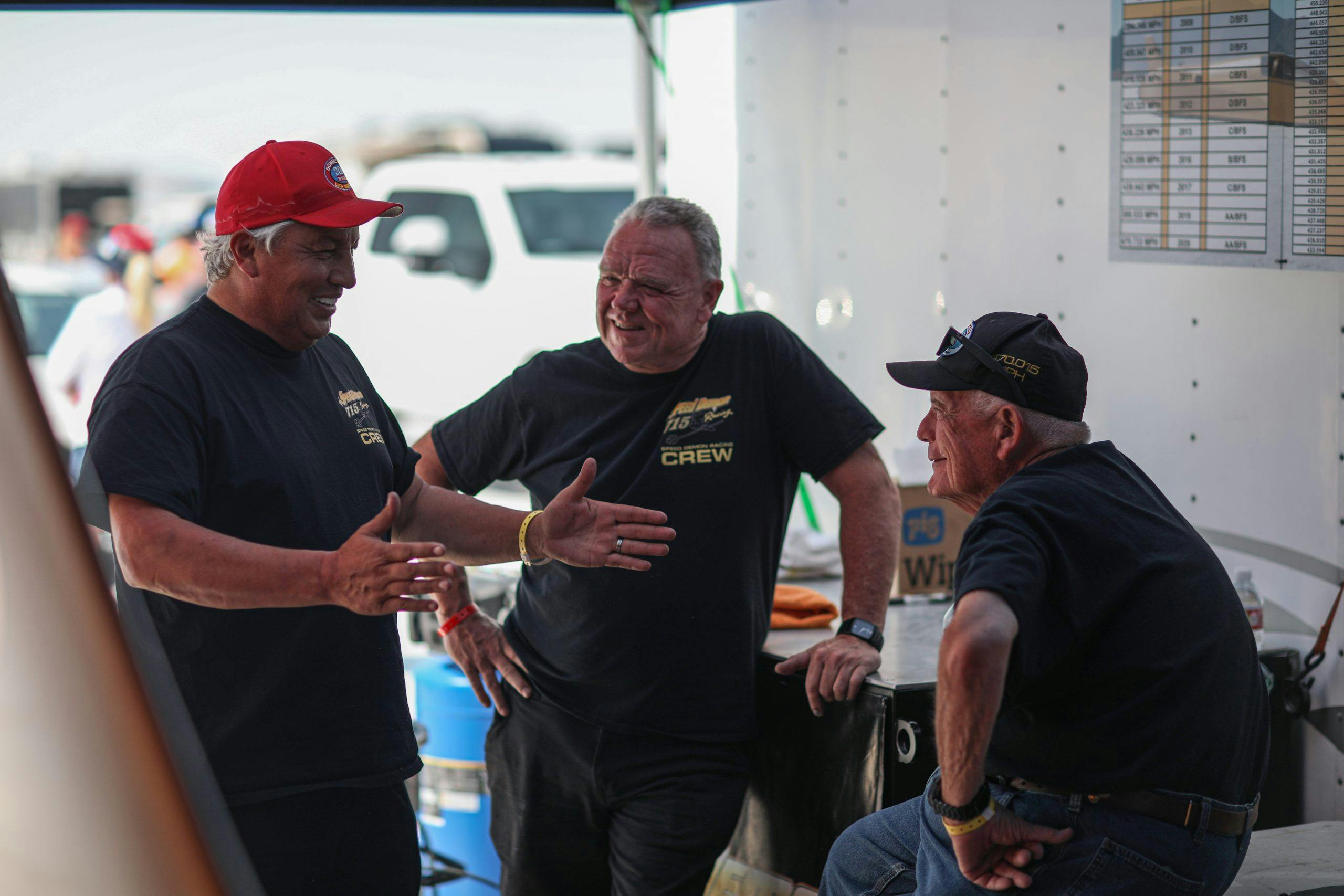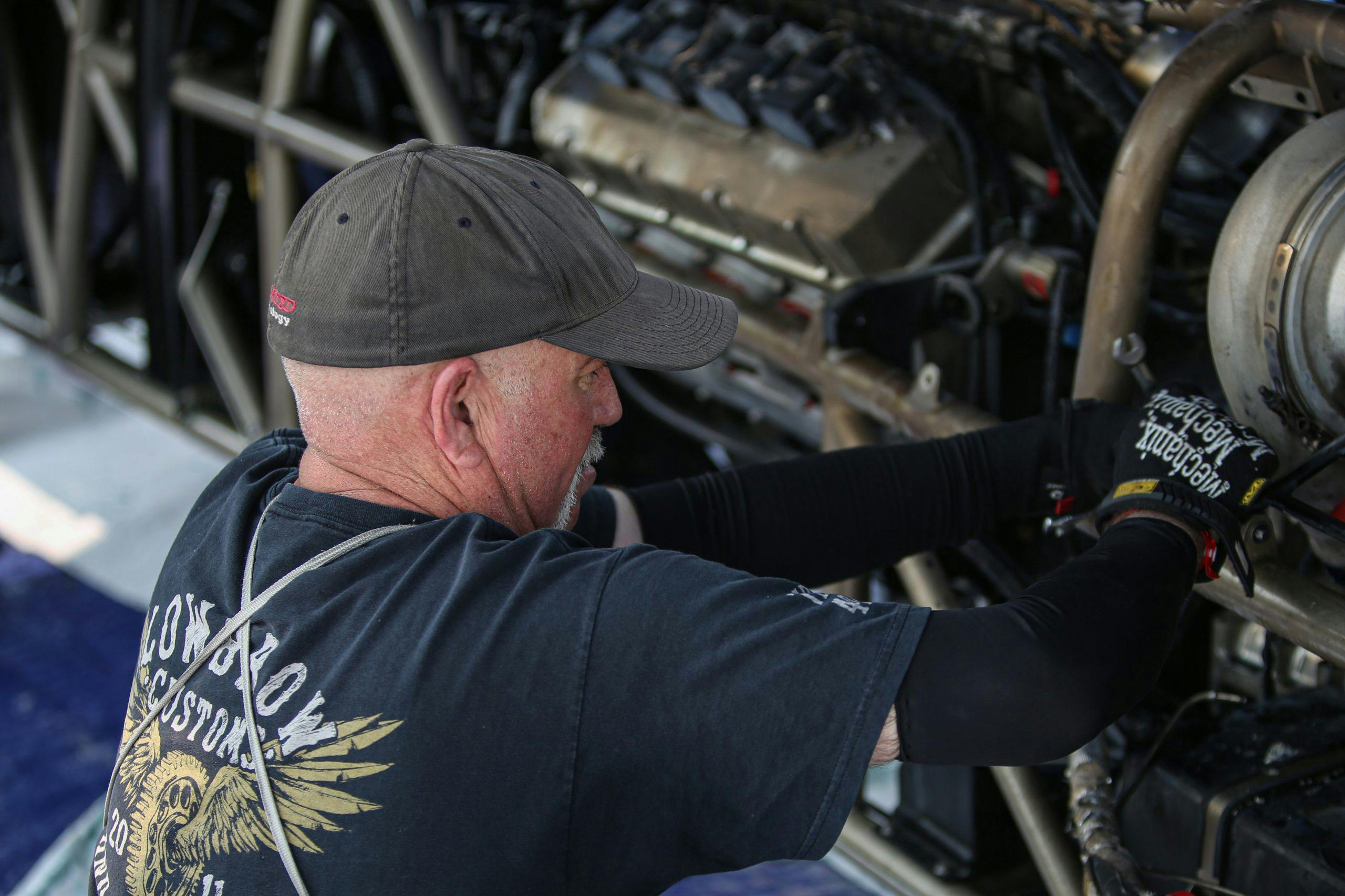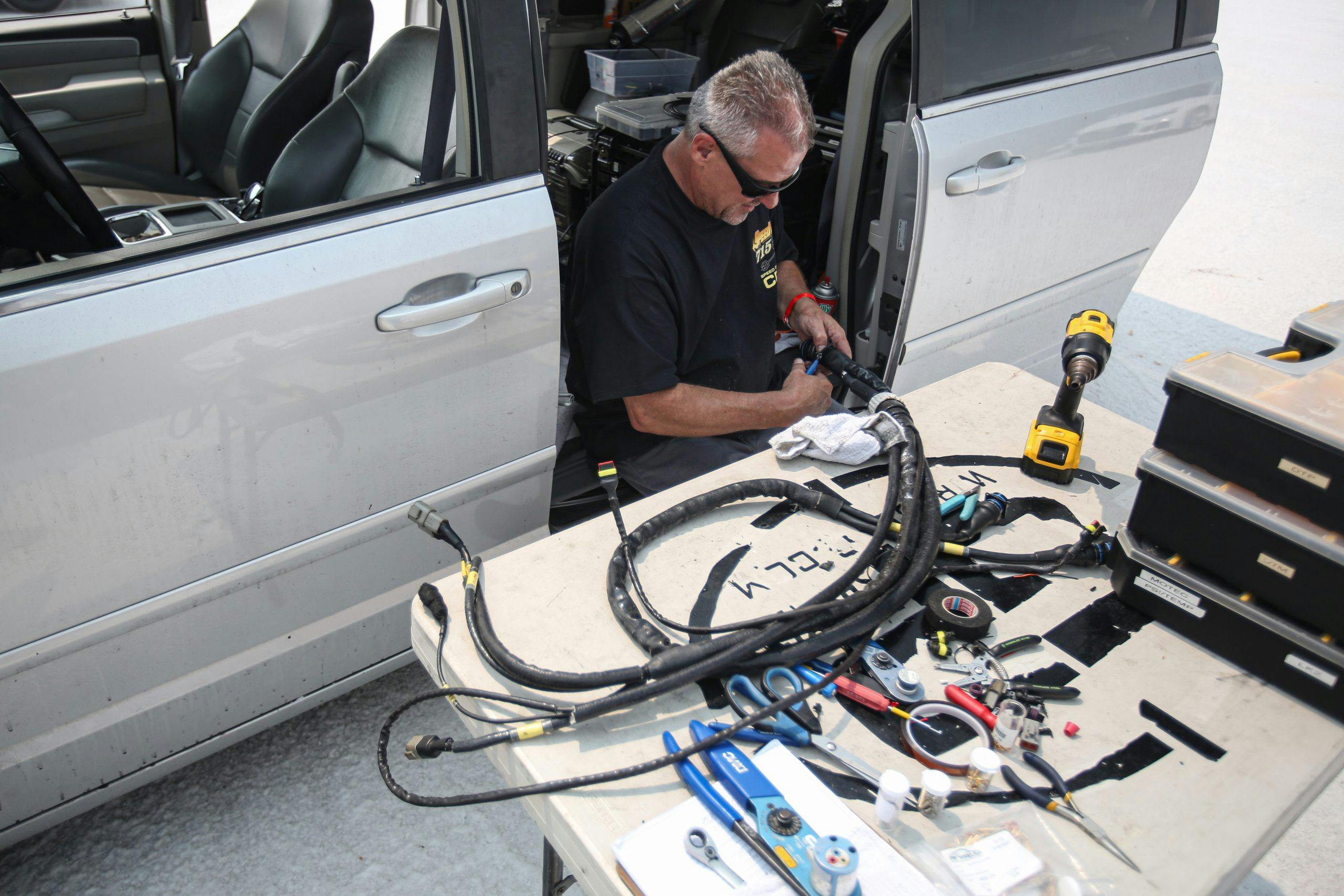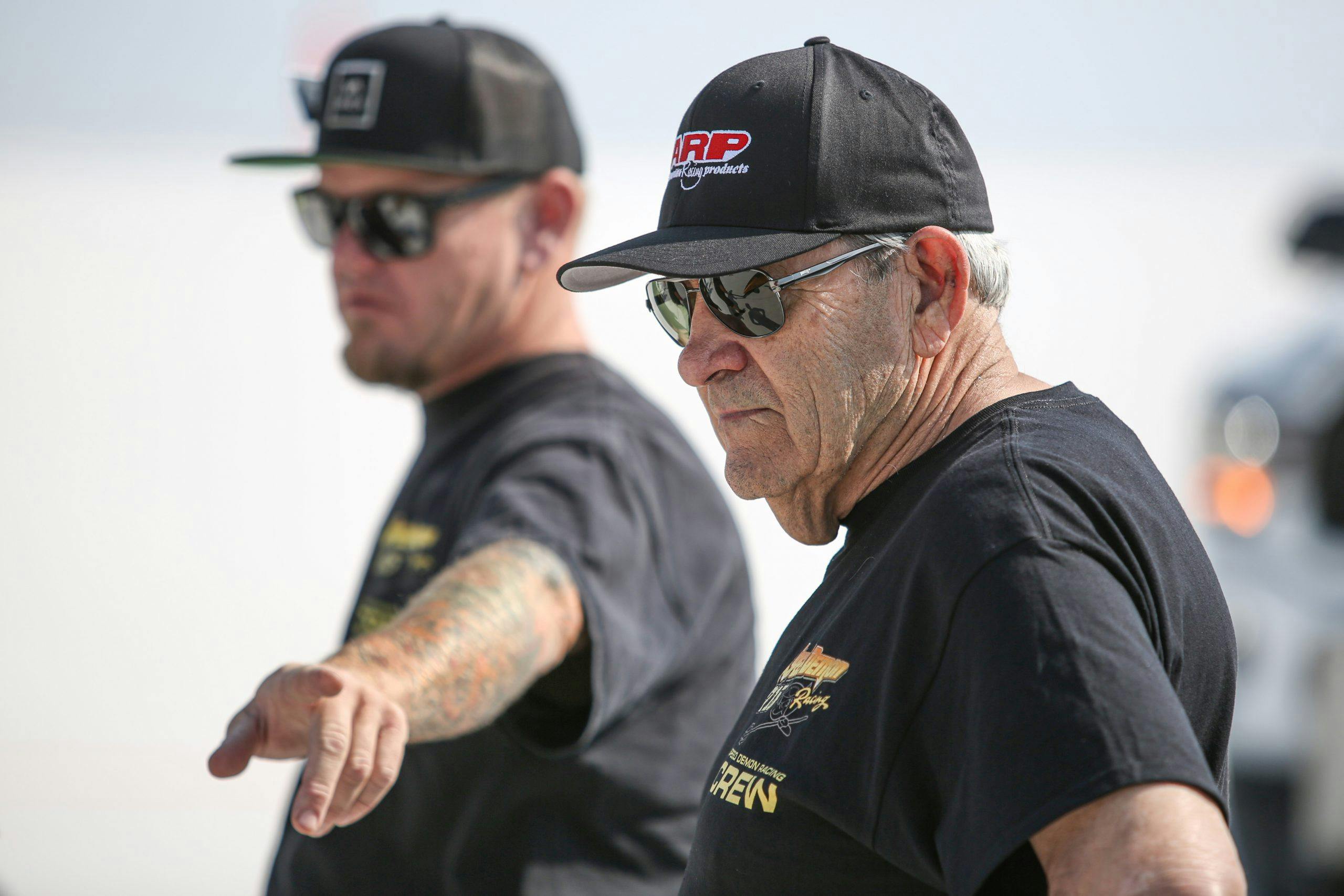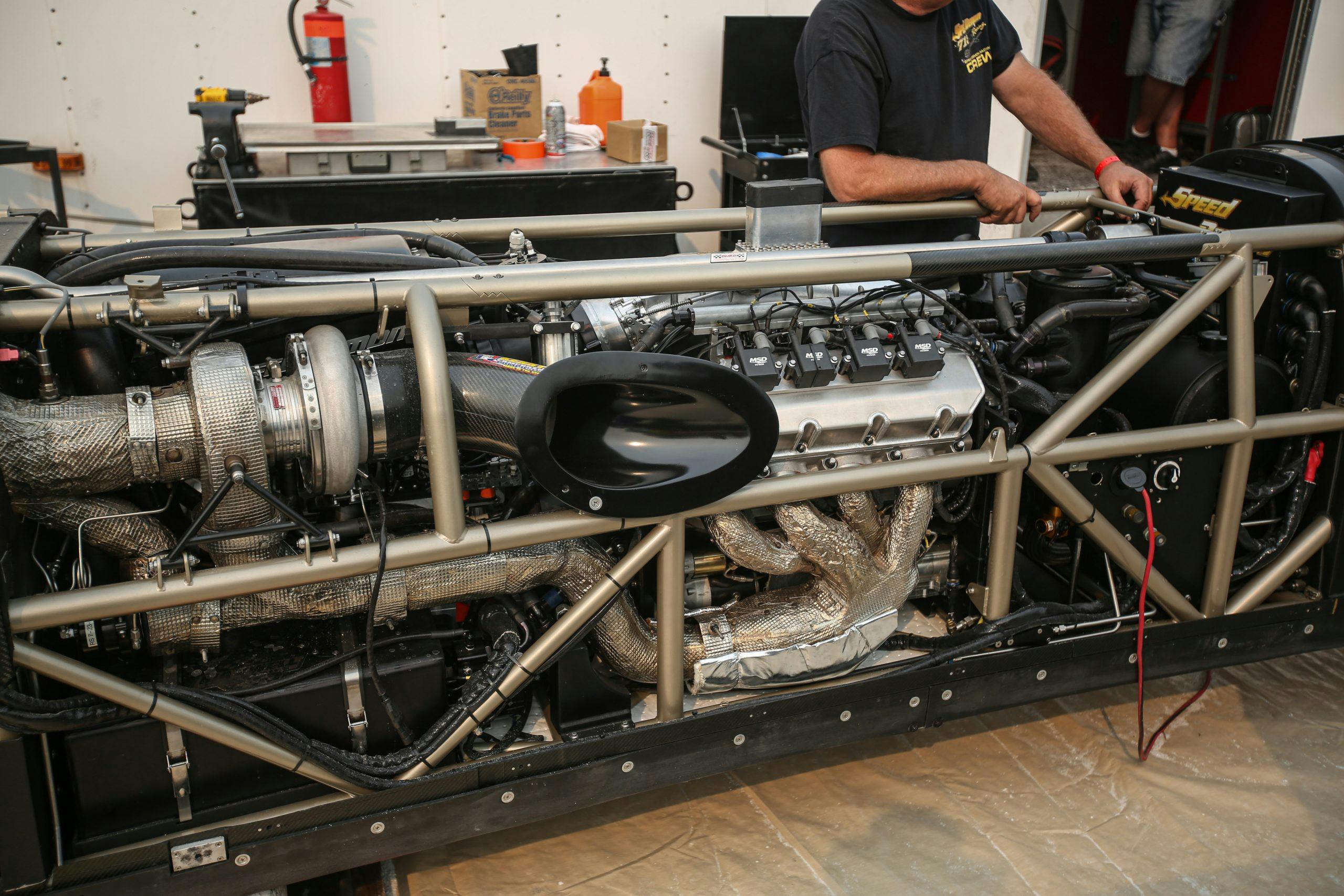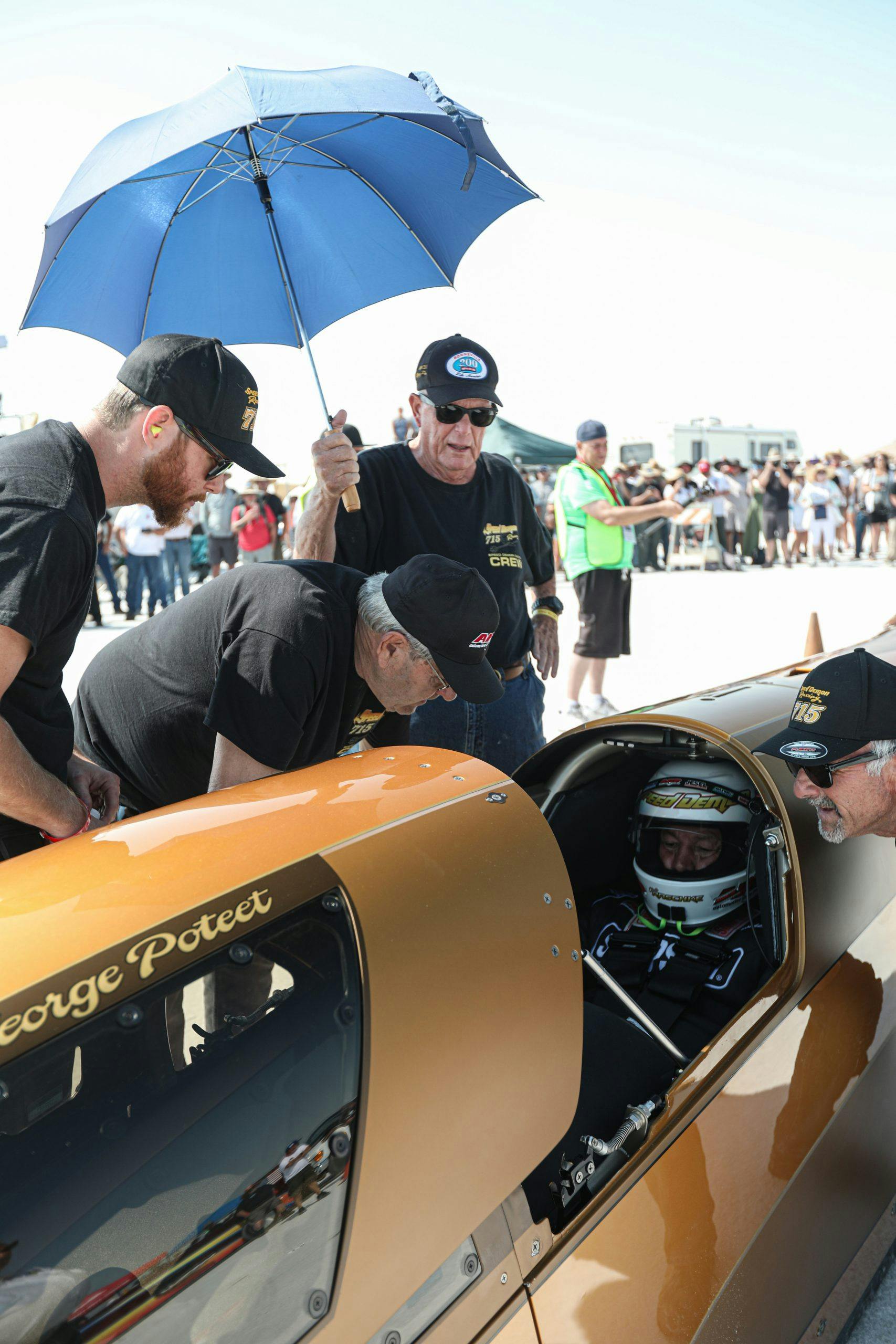Media | Articles
Speed Demon team claims fastest mile at Speed Week for record 10th time with 466mph run
Although it’s called Speed Week, many racers at the Southern California Timing Association’s largest annual racing event end up heading home long before the week is out, after either breaking a record or breaking their race car. Consequently, it’s the pre-race driver’s meeting where all competitors tend to gather so the crowd can celebrate the fastest pass of the previous Speed Week. This is where the only lasting prize in the SCTA is awarded: the Hot Rod Magazine Trophy. Thanks to a 470-mph run last year, George Poteet had his name inscribed for a record ninth time on Speed Week’s most revered prize. On Tuesday, the fourth day of Speed Week racing 2021, George Poteet clocked a 466 mph pass to earn his 10th spot on the historic tower of wood and brass, a feat that no other race team has come close to claiming.
Each year since 1949, the Hot Rod Magazine Trophy has been awarded to the driver that records the single fastest flying mile time of Speed Week. In case you’re not familiar with the Southern California Timing Association (SCTA) and its largest land speed racing event at Bonneville Speedway, the speeds are measured by markers placed every mile beginning one mile from the starting line. The SCTA will set up multiple courses if the condition of the salt allows. That typically includes a course that’s three miles long with two timed miles and several miles of graded shut-down afterward as well as a five-mile long course—four of them timed—with another three to four miles of graded shut-down area afterward. For 2021 there were two such long courses. Racers try to record an average mile speed in excess of a standing record and then have to make a return run the following morning to back it up and claim a record if the average of their two speeds surpasses the standing record. However, in order to claim the trophy, only one fast mile is needed; and in the land of 400 mph, there’s plenty to go wrong to derail even a seasoned team.
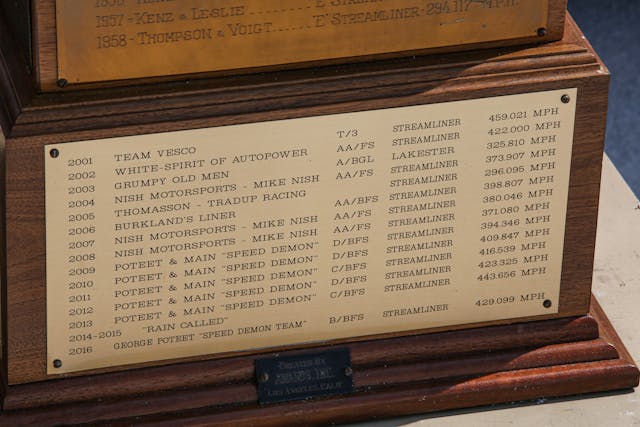
The Speed Demon team came back this year with several goals in mind. The first was to yet again claim top honors. After that, the team hoped to increase its record in AA/Blown Fuel Streamliner (AA/BFS) and, time permitting, take on the E record using the team’s 256-cubic-inch small-block Chevy V-8. (You can learn more about Bonneville’s engine classes here.)
Saturday
For the Speed Demon team’s first run of the week, a new driver was at the helm. Longtime crew member Chris Raschke, already a member of the 200-mph Club, needed to run between 275 and 300 mph in order to receive his final license certification from the SCTA, allowing him to take on speeds in excess of 300 mph. For the Speed Demon’s twin-turbocharged, alcohol-burning, 555-cubic-inch big-block Chevy V-8, 275 mph comes easy, but it’s not always so easy for the driver. Raschke handled it like a pro, completing the last licensing requirement before he could attempt to earn his way into the 300 mph Club and the ever-stylish blue hat that comes with it.
Sunday
Poteet waited until day two of racing to make his first pass with the big-block-powered streamliner, and he was immediately off to a fantastic start. The salt conditions were nearly ideal and traction was good, allowing the big, 3500+ horsepower V-8 to put lots of power down. After a team-best two-mile speed of 300 mph and a three-mile speed of 388.340 mph, an engine fire caused an early end to the run. Even on fire, the Speed Demon was good enough to claim the fastest time of the meet thus far, at 388.340 mph.
Marketplace
Buy and sell classics with confidence
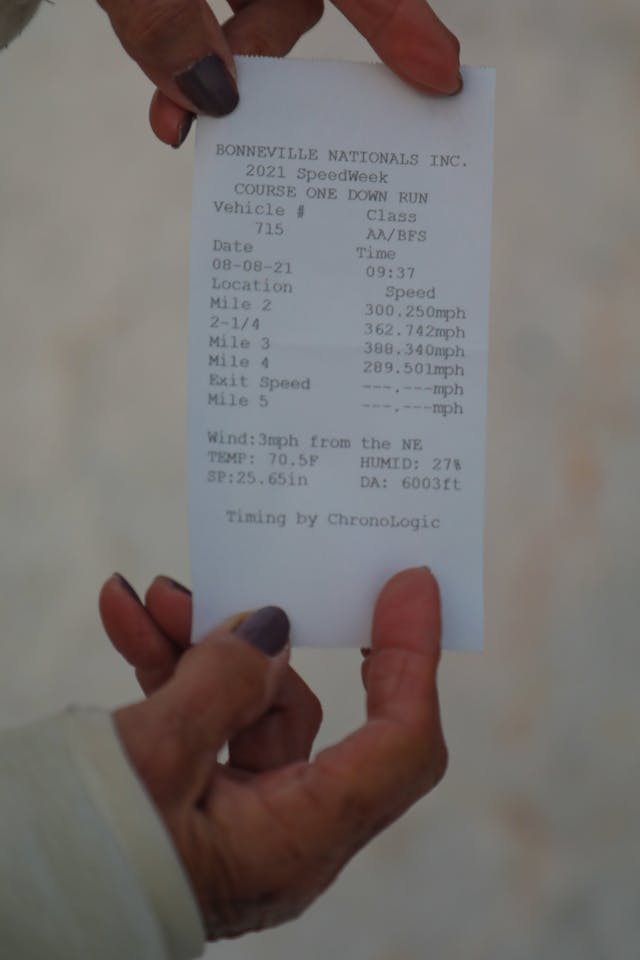
Poteet was completely fine, given that his driving position put him well ahead of any flames, and the fire suppression systems did their job. Unfortunately the engine’s wiring harness and transmission shift solenoids were obvious casualties, along with some blistered paint on the carbon-fiber bodywork. A fabricated valve cover seems to have been the cause; the valve cover gaskets on the Speed Demon’s engine don’t have any capacity to crush and fill those kinds of gaps. When combustion gasses get past the piston rings, the crankcase pressure has to go somewhere, so the tiniest of gaps can cause a mist of oil to fill the hot engine bay, needing only a hot engine part to ignite. A similar but more damaging fire happened at last year’s Speed Week. Luckily, the team uses an insulative cover for hoses and wires, so the crew’s wiring specialist, Greg Pyles, didn’t have as much work on his hands as he did last year.
Car crew chief Steve Watt rallied the Speed Demon crew to determine the plan. The first order of business was cleanup. The belly pan had contained most of the oil and fire suppression chemicals, but the car would require a substantial teardown to get the last remaining oil residue out of the car, particularly around the header insulation.
The team had another powerful engine at the ready, but the engine crew chief Kenny Duttweiler inspected the spark plugs and did a leak-down test on the big-block that determined the original engine would be ready for another run.
The team had the Speed Demon torn down in a matter of hours and soon began reassembly, a process that would take all of the afternoon and into the evening. The team had the car nearly ready to run by the time everyone had been ushered off the salt at 8:00 pm. Nobody is allowed to stay overnight on the salt, so any final tweaks would have to come in the morning.
Monday
One final mechanical gremlin appeared on the starting line: one of the air solenoids for the Liberty seven-speed transmission wasn’t working properly. A few turns of the wrench and some testing had everything running right, and the bodywork was then buttoned up. The last few checks include airing up the tires—100 psi in the rear and 150 psi for the front—and filling the charge cooler tank with ice and ice water.
Again, Poteet charged down the salt and had a tremendous run on his hands. This time a head gasket failure caused Poteet to pull the chutes after passing the mile three marker, with no improvement to his time.
The Speed Demon team has faced two major competitors in the last several years at Speed Week: Team Vesco with its turbine-powered Turbinator II streamliner, and Danny Thompson with the nitro-burning, twin-engine Challenger II streamliner. Thompson retired the Challenger II and it was recently sold at auction. After missing two years, Thompson returned in 2021 to pilot the gorgeous Ferguson Racing streamliner. After his pass on Tuesday morning, Thompson was in the lead for the trophy with a 388.740 mph run, having just eked ahead of the Speed Demon’s 388.340 time. As for Team Vesco, its efforts to squeeze more power from its surplus Lycoming T55 turbine led to some engine damage and they instead focused on campaigning an electric streamliner.
Engine Chief Kenny Duttweiler inspected the damaged big-block cylinder head, “It’s fixable, but not on the salt,” he reported. Salt Lake City is just over an hour away from Bonneville, but rather than relying on a Hail Mary machining job, the Speed Demon crew reached into their race trailer and pulled out a 443-cubic-inch Chevrolet LS V-8. Like the rest of the Speed Demon engines, it is mounted to its own engine plate. Thanks to clever design work and some quick-disconnect oil and water fittings, engine swaps on Speed Demon only take a couple of hours. They’d be ready to go with another 3000 horsepower engine in the morning.
Tuesday
Drivers that qualified for a record the previous day have the first go at the salt, but when those runs had gone, the Speed Demon team was ready to hopefully make a big pass. The team completed the same pre-run checks, pointed Speed Demon down the track, and strapped Poteet into the unpadded race seat. Ron Main’s Super Duty dually pushed him off and Poteet hammered the throttle down, leaving it there for the duration of the run. From our position beyond the six-mile mark, it was clear he had an impressive run. The sound is unmistakable; when Speed Demon is on a tear, winding its engine past 9000 rpm and kicking up a roostertail of salt, it creates a one-note roar that’s recognizable even before the spear-shaped car appears from over the horizon.
When the car came through the five-mile mark, still full-throttle, it was apparent that the Speed Demon team had become the frontrunner. The announcement over the CB radio confirmed: 466.29o mph, with an exit speed of 475.410 mph. The exit speed, while not useful for any record nor for the Hot Rod Trophy, proves that the Speed Demon was still accelerating through the final timed mile.
George Poteet was immediately greeted by his crew and his family, who all celebrated his 56th 400-mph+ pass in the Speed Demon thus far. That 466-mph speed would prove, unsurprisingly, insurmountable—more than enough for the Speed Demon team to capture the Hot Rod Trophy for an amazing 10th time.
Poteet wasn’t able to back up that run and increase their A/BFS record. Later in the week, Chris Raschke collected a 390 mph time slip to qualify on the existing 348.150 mph record in E/BFS, but an engine inspection revealed a cracked oil control ring that put an end to any attempt at a record return run. We spoke to Speed Demon crew chief Steve Watt about the team’s eventful time on the salt: “It was an up and down Speed Week, but we got the trophy,” Watt told us, and that had always been one of the team’s main missions.
